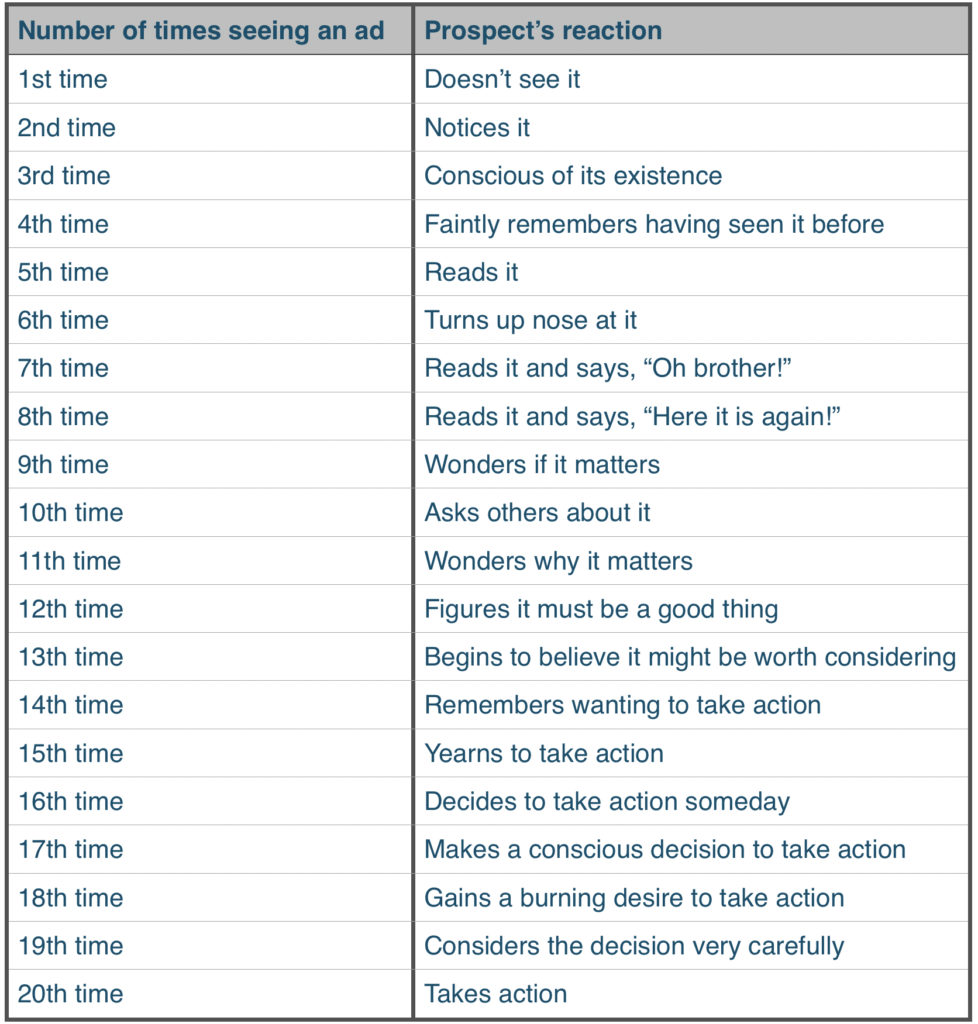 Login
Login
Your Role
Challenges You Face
results
Learn
Resources
Company
3 scientific concepts you should understand and use properly to break through the noise and gain your supporters’ attention.


People are busy.
They’re also drowning in information, data, marketing, and fundraising communications. Gaining their attention isn’t easy.
Here are 3 scientific concepts to help you break through the noise: signaling theory, the mere exposure theory, and the Baader-Meinhof Phenomenon.
- Signaling theory, first mentioned by Anthony McGann and Raymond Marquardt at the University of Wyoming in 1975, states that communication messages with high rates of repetition signal quality to consumers, which leads to high ratings in Consumer Reports. Donors invest in quality nonprofits in which they believe and have confidence. Therefore, it is highly likely that repetition of the right kinds of messages over time will signal to donors that your organization is a worthy beneficiary of their donations.
- Similarly, the mere exposure theory states the opposite of the old saying, “familiarity breeds contempt.” In marketing and communications, familiarity as a result of repetition often leads to a positive impression and a preference for a brand, or nonprofit – not contempt.
- Finally, the Baader-Meinhof Phenomenon relates to how, after we first take notice of something, it begins to pop up everywhere. For instance, soon after my next-door neighbor bought a Jeep Wrangler, I began to see Wranglers everywhere I went.
Bonus:
All three of these concepts only reinforce what Thomas Smith wrote way back in 1885 in his groundbreaking book, Successful Advertising. It went something like this:

How to use these concepts:
For charities, it isn’t a matter of repeating the same message over and over again. It’s about making your donors feel good over and over. That’s what does the trick.
Repetition costs money, so it’s important to try to do it at low cost – while remembering that no one likes the friend who only calls when he needs money!
Make sure your repetitive messages are focused on making the donor feel good, and you’re not always showing up with your hand out.
Polite, respectful, helpful persistence pays off. Find a balance between being the obliging friend who reaches out every once in a while to provide assistance and the annoying salesperson who won’t stop knocking on their door. Making your messages relevant, personalized, novel, and valuable usually takes care of this.
For example:
At MarketSmart, we find that many people sign up for my blog posts (sent every Monday, Wednesday, and Friday), our MajorGiftMotivator (free motivational quotes sent out every Tuesday), and our invitations to take advantage of our webinars and free resources. In some cases, our subscribers might get as many as seven email messages from us in a single week, yet few people unsubscribe.
That’s because our messages provide value.
If you do the same, you can send as many messages as you want yet still be reasonably assured that people will not get annoyed.
Related Posts:
>>Why everyone talks about segmenting emails but hardly anyone ever does it
>>Fear or fear not a massive disruption in the fundraising industry that is the question